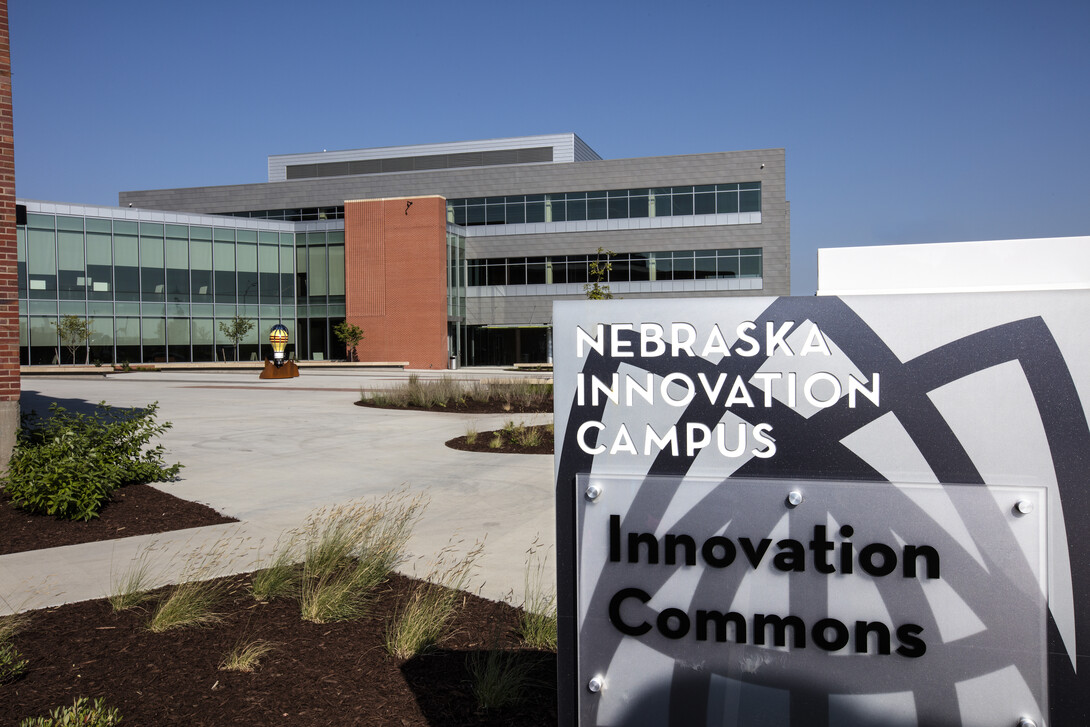
The teaching, research and outreach activities of the University of Nebraska annually generate more than $3.9 billion for Nebraska’s economy, according to an independent new analysis of the university’s significant and far-reaching impact on the economic and cultural vitality of the state.
The analysis, presented Jan. 29 to the NU Board of Regents, was conducted by Tripp Umbach, a leading national consultant with expertise in economic impact studies. NU President Hank Bounds said the firm’s findings confirm that the University of Nebraska plays a fundamental role in ensuring the state’s economic competitiveness and quality of life and that continued investment in higher education is vital to the state’s success.
“The University of Nebraska touches virtually every Nebraskan in some way,” Bounds said. “We know intuitively that the university is deeply connected to the economic and social well-being of the state. This report confirms that the state cannot be successful without its public university. No single number or report can fully capture the impact of the University of Nebraska. But this analysis makes clear that the mission-driven activities of the university are transforming lives and communities across the state – and that we have a proven record of successfully leveraging the resources that Nebraskans invest in us.”
Chancellor Harvey Perlman said that, as the state’s land-grant university, it is the University of Nebraska–Lincoln’s tradition and commitment to contribute to the economic growth of Nebraska and its people.
“We take that mission seriously, both in our Nebraska Extension activities and the development of Innovation Campus,” Perlman said. “We also produce the talent to make Nebraska’s economy successful.”
Among Tripp Umbach’s key findings:
The university’s $3.9 billion annual economic impact means that the activities of NU campuses, faculty, staff and students — and the resulting ripple effects in business and communities statewide — add nearly $11 million each day to Nebraska’s economy.
The University of Nebraska sustains a highly skilled workforce for the state, supporting one out of every 36 jobs in Nebraska. The 35,000 Nebraska jobs supported by the university include not just NU employees, but 19,000 people who have jobs as a result of university activities.
NU trains current and future generations of Nebraska’s leaders. About 189,000 NU alumni live in Nebraska, representing one of every seven working-age Nebraskans. More than 10,000 new NU graduates enter the workforce every year, growing the state’s earning power by $50 million annually. Many of those graduates stay in Nebraska and fill key needs in agriculture, engineering and information technology, nursing, allied health, business and other fields.
University research not only grows the economy, but fosters innovation and addresses key challenges facing Nebraska and the world. NU research has a $385 million annual economic impact, supporting 2,500 jobs and advancing knowledge in areas such as water and agriculture, treatment of diseases such as cancer and Ebola, national security and defense, early childhood education, rural development and others. In addition, faculty are increasingly bringing innovations from the lab to the marketplace, resulting in new licensing income, patent activity and startup companies across the state.
The university gives students the opportunity to change their lives through education. NU’s four campuses and the Nebraska College of Technical Agriculture educate more than 50,000 students each year. Those include students who are the first in their families to go to college, other underrepresented students, military learners transitioning back into civilian life, aspiring entrepreneurs and distance learners who wouldn’t have access to higher education if not for NU’s online programs.
The University of Nebraska builds economically and socially vibrant communities — not just in the cities where NU campuses are located, but in communities across the state. The university has a presence in all 93 counties. Initiatives such as Nebraska Innovation Campus at UNL, University Village at the University of Nebraska at Kearney, Baxter Arena at the University of Nebraska at Omaha and the Fred and Pamela Buffett Cancer Center at the University of Nebraska Medical Center are among numerous public-private partnerships that the university is engaged in with a goal to grow economic activity and community engagement.
The well-being of the state is directly linked to the University of Nebraska. NU employees and students annually provide $90 million in charitable donations and volunteer services, like student-led service activities, free health screenings, free scholarly lectures and more. The university’s campuses also offer activities that enhance Nebraskans’ cultural understanding and build connections among citizens, including concerts, art exhibits and athletic events.
“NU is a major force in the Nebraska economy in terms of workforce, innovation, health care and economic development,” said Paul Umbach, founder and CEO of Tripp Umbach. “The true impact of the University of Nebraska goes far beyond the $3.9 billion in annual economic impact, as the university is a resource for every Nebraskan. It is the linchpin for Nebraska’s continued growth and prosperity.”
Tripp Umbach’s full report, including the firm’s methodology and detailed findings, along with additional information about the University of Nebraska’s economic and social impact on the state, is available online.







